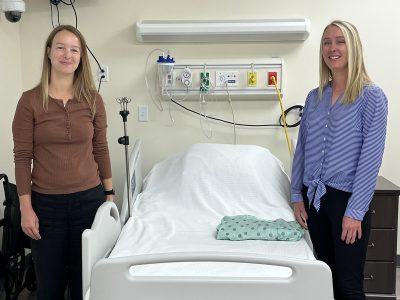New Research Published on Disability and Mortality Disparity
Earlier this month, Associate Professor of Sociology Scott Landes published a new study entitled “Disability Mortality Disparity: Risk Of Mortality For Disabled Adults Nearly Twice That For Nondisabled Adults, 2008–19” in the August edition of Health Affairs journal.
The report is the first of its kind to address the substantial knowledge gap on health disparities in the United States between disabled people and non-disabled people. Landes answered questions from SU News about his latest research.
Tell me about the new research that you just published.
Between 2008 and 2019, all-cause mortality risk was nearly two times higher for disabled than nondisabled adults. This mortality disparity was not just present for some disabled people, but persisted for disabled people across age, gender, race-ethnicity, socioeconomic status and health status groups.
Additionally, a mortality disparity was present for all of the 28 disability status combinations examined in the study (e.g., vision only; vision, hearing and mobility; etc.). While all disability status combinations were associated with a higher mortality risk compared to nondisabled adults, the degree of this disparity was more severe for people with a self-care (activities of daily living) disability.
In finding that disabled adults have a mortality rate that is twice as high as nondisabled adults, what does that tell you about the state of healthcare for people with disabilities?
Research provides substantial evidence that disabled people experience ongoing barriers to accessing quality care, ranging from problems with reliable transportation to challenges accessing often inaccessible physicians’ offices or medical settings. In addition, research from Dr. Lisa Iezzoni reveals that even when disabled people are able to access health care, physicians are biased in thinking that they will necessarily be less healthy than non-disabled people. This bias likely impacts course of treatment and care. So whether via challenges accessing care or challenges receiving the best care once accessed, medical care persists as an area of disparity for disabled people.
This research is the first time that mortality rates of disabled adults as compared to non-disabled was investigated. What led you to explore this issue?
At the 64th Meeting of the National Advisory Council on Minority Health and Health Disparities (NIMHD) on Sept. 1, 2023, a working group examining health disparities recommended that the “entire disabilities population NOT [emphasis added] be categorized as a National Institute of Health (NIH) designated health disparities population [PDF]. Fortunately, and largely in response to continued advocacy from the U.S. disability community, the NIMHD Director did not heed this advice, instead designating disabled people as a health disparities population on Sept. 26, 2023.
When making their recommendation to not designate disabled people as a health disparities population, the working group expressed concern, with no supporting evidence, that disabled people may have higher prevalence of all-cause mortality, but that they were not sure that all disabled people experience this and other health disparities. The dangerous precedent set here is assuming health disparities do not exist among a minority population known to experience a multiplicity of inequities. Fortunately, the Director of the NIMHD did not heed the advice of this working group, instead designating disabled people as a health disparities population on Sept. 26, 2023.
After hearing the working group’s suggestion to not designate due to insufficient evidence of disparities among disabled people, I decided to examine whether a mortality disparity was present among disabled adults in the U.S., and if present, whether it persisted across the disabled population.
What are the big takeaways from this research, and who needs to know about it (public policy officials, medical professionals, etc.)?
In sum, disabled people experience a substantial mortality disparity that extends across this population. This really needs to be an all-hands-on-deck moment, especially as we know that disabled people were also more likely to experience more severe COVID-19 outcomes during the height of the pandemic. All medical providers need to be aware of the increased risk of mortality among disabled people, but in being aware, should not assume that this is simply an inherent outcome of disability. Instead, it needs to be viewed as a disparity that can likely be reduced with higher quality care, both preventive and emergent care. In addition, policymakers need to continue working to ensure accessibility among medical providers, a goal that will be more enforceable in light of the recent Final Rule Implementing Section 504 of the Rehabilitation Act.
What is next? Does this research lead to more questions that need to be investigated?
The most pressing questions that remain are what are the exact mechanisms informing the disability mortality disparity, specifically how much of this disparity is due to health care access, socio-economic status, bias among health care providers as well as structural ableism. We need to know more about these exact mechanisms in order to better target interventions aimed at reducing this disparity.


